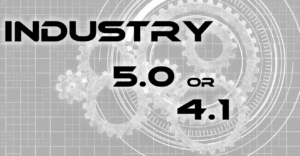Manufacturers have historically found themselves at the cutting edge of technological advances. The term “industrial revolution” pays homage to this fact. It’s surprising, then, to read stories encouraging manufacturers to jump aboard the Digital Age technology bandwagon. You wouldn’t think encouragement would be required. During a fall meeting of the Manufacturers’ Council of the Inland Empire, Gregg Profozich, Director of Advanced Manufacturing Technologies at California Manufacturing Technology Consulting (CMTC), told participants, “Technology is key to survival of manufacturers.”[1] Among the technologies he stressed were, cyber-physical systems (CPS), the internet of things (IoT), industrial internet of things (IIoT), cloud computing, cognitive computing, artificial intelligence (AI), additive manufacturing, advanced robotics and smart manufacturing. He stated, “New technologies can lead to rapid, widespread change as the rate of technology adoption is accelerating across society.” He noted, “Each of these technologies will fundamentally change how products are manufactured.”
Technology and Industry 4.0
The term “Industry 4.0” was coined to describe the Fourth Industrial Revolution. Anant Kale (@anantkale), Co-Founder and CEO of AppZen, explains, “The first industrial revolution mechanized production using steam power, the second gave us the assembly line for mass production and the third industrial revolution gave us advanced automation using IT and electronics. We are at the cusp of a fourth industrial revolution driven by artificial intelligence, robotics, and web services. This latest revolution is proving to be the most disruptive yet, taking automation to levels most of us can’t imagine.”[2] It makes perfect sense that manufacturing must adapt to the digital age. For years business consultants have suggested companies organized around principles developed during the Industrial Age need to transform into digital enterprises in order to survive in the Digital Age. Profozich described some of the changes currently taking place. He noted, “Additive Manufacturing will eliminate or enhance tooling allowing for the quick development of custom tools, fixtures, and jigs to improve quality and through-put. … Advanced Robotics will help to reduce quality problems, lower worker’s compensation costs and reduce repetitive stress injuries. … Smart Manufacturing through the use of advanced sensors, controls, platforms and modeling, will deliver information about the production/manufacturing process across the entire value chain.”
Profozich alludes to the notion that advanced technologies shouldn’t be considered in isolation. They are best when they are integrated. Prashanth Mysore, Industry Portfolio Technical Director at Dassault Systèmes Adelaide, explains, “As manufacturers continue to invest in automation and software simulation solutions, the need to integrate each of these disparate systems together increases. This is the power of the Industry 4.0 transformation now underway.”[3] Mike Hooper, Director of Digital Transformation with OpenText, adds, “Consider digital transformation more holistically. Digital transformation is sometimes considered the move from paper-based to digital processes. However, the factory of the future takes this further. It relies on the convergence of operations technology with information technology. … Each individual company will have to decide which combination of technologies will meet their specific business goals.”[4]
Big Data, Advanced Analytics, and Cognitive Computing
Although I agree with Hooper that each company must decide for itself which technologies best suit its circumstances, most companies will find they require big data, advanced analytics, and cognitive computing. Mysore notes, “Artificial intelligence will soon play a greater role [in manufacturing].” Hooper agrees. He explains, “Through applied AI and advanced analytics, data will drive processes in the factory of the future. Smarter data and analytics solutions will allow for early — or even predictive — detection operational errors. Moreover, these solutions provide user feedback, enabling factories to improve the volume and quality of production output. The factory of the future will enable more customization facilitated by data that identifies demand, minimizes the downtime needed for retooling and resetting, and enables greater flexibility in manufacturing processes.” They are optimistic about the future of cognitive computing and advanced analytics in manufacturing because manufacturers produce enormous amounts of data every day; and, data is now considered the world’s most valuable resource.
Louis Columbus (@LouisColumbus), a Principal at IQMS, explains, “Going into 2020, manufacturers are at an inflection point in their adoption of analytics and business intelligence (BI). Analytics applications and tools make it possible for them to gain greater insights from the massive amount of data they produce every day.”[5] He suggests five ways manufacturers can immediately benefit by leveraging advanced analytics. They are:
1. Manufacturing Cycle Time. Columbus writes, “Cycle Time quantifies the amount of elapsed time from when an order is placed until the product is manufactured and entered into finished goods inventory. … Real-time integration, applying Six Sigma to know process bottlenecks, and re-engineering systems to be more customer-focused improve this metrics’ performance. Cycle Time is a predictor of the future of manufacturing as this metric captures improvement made across systems and processes immediately.”
2. Supplier Inbound Quality Levels. According to Columbus, “Measuring the dimensions of how effective a given supplier is at consistently meeting a high level of product quality and on-time delivery is valuable in orchestrating a stable supply chain. … This metric is often used for ranking which suppliers are the most valuable to a factory and production network as well.”
3. Production Yield Rates by Product, Process, and Plant Location. “Yield rates,” Columbus writes, “reflect how efficient a machine or entire process is in transforming raw materials into finished products. Manufacturers rely on automated and manually-based approaches to capture this metric, with the latest generation of industrial machinery capable of producing its yield rate levels over time. … Greater real-time integration, improved quality management systems, and greater supply chain quality and compliance all have a positive impact on yield rates. It’s one of the key measures of production yield as it reflects how well orchestrated entire production processes are.”
4. Perfect Order Performance. Everybody aspires to perfection; but perfection is nearly impossible to achieve. Columbus explains, “Perfect order performance measures how effective a manufacturer is at delivering complete, accurate, damage-free orders to customers on time. … The more complex the product lines, configuration options, including build-to-order, configure-to-order, and engineer-to-order, the more challenging it is to attain a high, perfect order level. Greater analytics and insights gained from real-time integration and monitoring help complex manufacturers attain higher perfect order levels over time.” Columbus makes an important point about improving performance over time. One of the reasons cognitive computing systems, like the Enterra Enterprise Cognitive System™ (AILA®), can help is that they leverage machine learning. The more you use them, the better they get.
5. Return Material Authorization (RMA) Rate as % Of Manufacturing. Columbus explains, “The purpose of this metric is to define the percentage of products shipped to customers that are returned due to defective parts or not otherwise meeting their requirements. RMAs are a good leading indicator of potential quality problems. RMAs are also a good measure of how well integrated PLM, ERP and CRM systems, resulting in fewer product errors.”
Daniel Gutierrez (@AMULETAnalytics), an analytics consultant, observes, “It’s widely agreed that the implementation of artificial intelligence is vital for future growth.”[6] This is especially true for manufacturing. He cites a study by McKinsey & Company that concludes, “Manufacturing industries which invest in artificial intelligence technology are predicted to see an 18% estimated annual revenue growth — more growth than all other industries analyzed.” Hooper concludes, “The growth and advantages that come with this progression in manufacturing are too significant to wait for the ‘future’ to arrive. With the intelligence and financial returns that the factory of the future promises, the manufacturing world will see it sooner than we think.”
Footnotes
[1] Staff, “Technology is Key to Survival of Manufacturers,” InlandEmpire.us, 6 November 2019.
[2] Anant Kale, “AI Expert: How the Fourth Industrial Revolution Will Impact Our Lives,” PSFK, 7 October 2016.
[3] Prashanth Mysore, “Take Advantage of Digital Manufacturing to Improve Workforce Productivity,” The DELMIA Blog, 6 November 2019.
[4] Mike Hooper, “Six areas to be found in factories of the future,” FutureIoT, 18 October 2019.
[5] Louis Columbus, “5 Proven Ways Manufacturers Can Get Started With Analytics,” Forbes, 3 November 2019.
[6] Daniel Gutierrez, “Manufacturing Industry Predicted to Benefit Most from Artificial Intelligence Technology,” insideBIGDATA, 2 October 2019.





